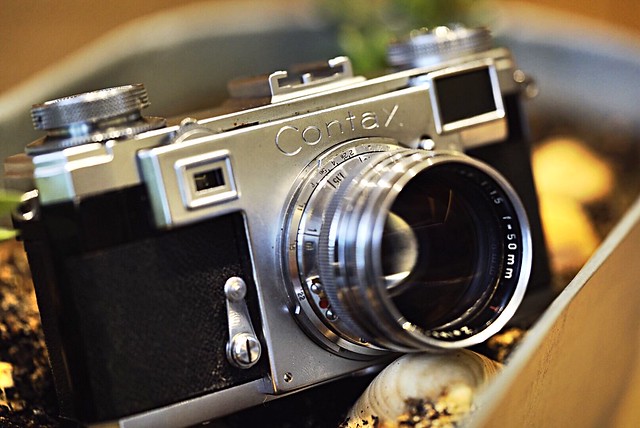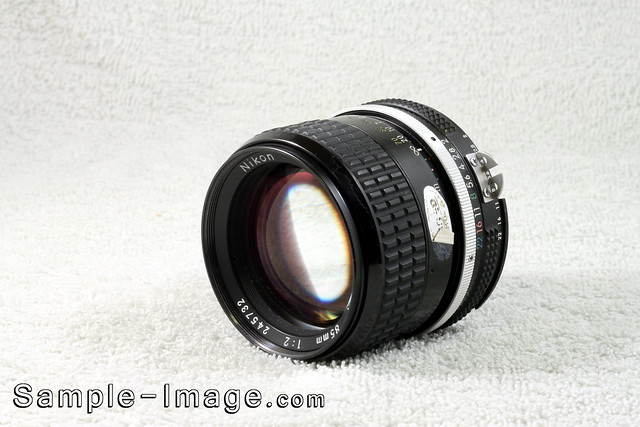“If your pictures aren’t good enough, you aren’t close enough.”
Today were are starting of a new series of articles based around quotes from famous photographers. The aim of this series in not to break down what was exactly meant by the quote but how to achieve the aim of the quote. In each article we will give you a very brief biography of the photographer then explain how to achieve his or her inspiring quote.

One of Capa's cameras was the Contax IIa with a 50mm f1.5 by Xavier León
Robert Capa 1913-1954 War Photographer
Born in Hungary Capa is one of the most recognised and celebrated war photographers of all time. His iconic images range from the Normandy landings through to the end of World War Two and on to the Arab Israeli and IndoChina wars. He died in 1954 after stepping on a land-mine in Vietnam.
Why Get Close?
Capa was from an era when zoom lenses were virtually unheard of. His quote suggests using your feet to move in closer, fill the frame and isolate the subject.
The majority of us these days own zoom lenses, mainly for their convenience, but they can make us a little lazy if not complacent about our compositions. When we zoom in on a shot, the perspective of the shot does not change, only the field of view. However, if we replace that zoom lens for a wide angle prime and move closer, the entire perspective of the scene changes. We move close and tight on our subjects and this perspective makes the image’s viewer feel close to the subject matter too, more engaged. Compare a similarly cropped images, one with a wide angle and one with a telephoto. Because we are further away with the telephoto, the perspective of the shot is flatter, we feel less connected with the subject. With the same crop using a wide angle, we feel we are there, amongst the action. The ability to change the perspective of a shot is a vital part of basic composition and can only be done by moving position.
There is another very relevant factor in getting in close to your subject: Image quality. By getting the framing right in camera you are maximising the technical potential of that shot. Now this might not seem so important in the days of 50mp cameras but in Capa’s day, shooting on film, very often with a highly pushed ISO, it was vital. We can learn from those days. Whilst it is tempting to just accept our positioning and crop later in Photoshop, spending time moving around, framing the shot tightly, not only teaches you about perspective but also how to be a more patient and thoughtful photographer.

Getting close was important when using high speed film as there was not much room for cropping, by Jorge Gonzalez
How to Get Close for Better Photographs
As we have already mentioned, many of us own zoom lenses. A lot of will only own zoom lenses. So how can you train yourself to get in close to the action? Well owning or buying prime lenses will help. A moderate wide angle 28mm or 35mm full frame equivalent is the best option. These lenses require you to get close into you subjects without adding the distortion that ultra wide lenses can introduce. The 35mm in particular is a firm favourite of the photojournalist, allowing you to be close to the action but not right in it. They are also usually fast aperture lenses allowing you to work in low light.

Why not look at old lenses to get a prime? By Sample – Image.com
What if you don’t own a prime or have the budget to buy one? We there is a simple way to create a prime lens from any zoom. Electrical tape. Simply set your favourite standard zoom lens to 28mm or 35mm equivalent and tape the zoom ring up. Electrical tape will not damage the lens, is easy to remove and most importantly removes the urge to zoom the lens.
When out shooting with your prime or improvised prime start to look at the scene you are shooting. Are you close enough? Does your subject fill the frame? Does the current perspective add or detract from the composition. As well as moving in close, move around and up and down. All of these will change the perspective of the shot too. By shooting in all the different positions you can, you can see how the perspective changes and learn which one is likely to be best for different situations.

Moving close will train the eye in perspective by Jason Row Photography
There is a reason that we often see inspirational photographic quotes on the internet and that is because, they come from some of the greatest photographers ever to press a shutter. For that very reason, we should be listening to what they say even long after they have left us.





3 Comments
Did you think Capa was not talking about physical proximity when he said this?
What about getting closer to our subjects emotionally and intellectually? Capa shot what he knew and hated, but he was close to war — not just physically.
Ansel Adams did not shoot closeups of Yosemite, but he was so passionate about his subject, he also lobbied for it, becoming the father of our National Parks system.
Don’t always take great quotes to be about gear and technique. Photography goes so much deeper into the human experience that taking Capa’s quote at its most shallow interpretation deprives us of the depth of his wisdom and experience.
Deep.
Well said Mike…..totally agreed with you.